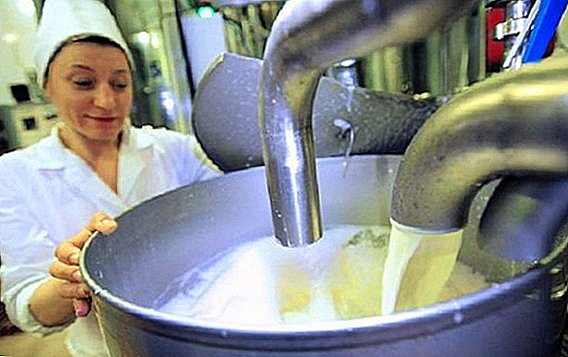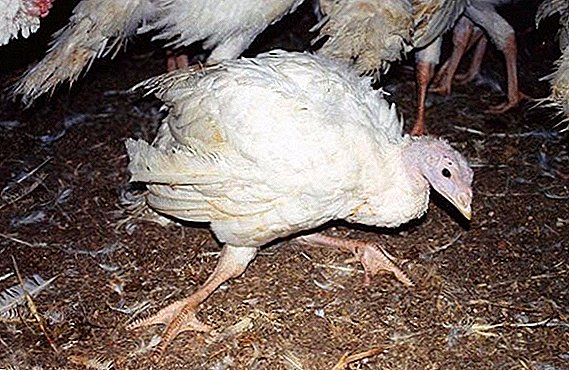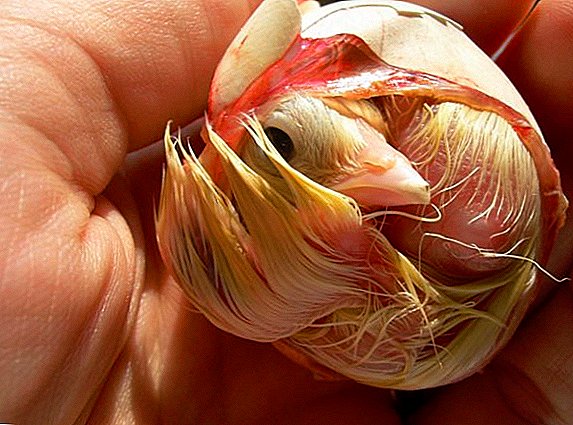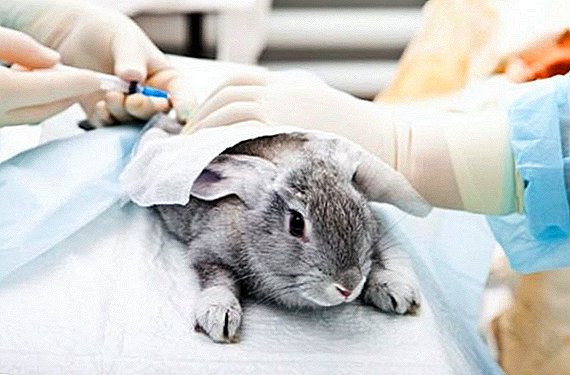 In order not to harm people, all new inventions in the field of medicine and cosmetics are tested on animals. Today, almost all known animals are used for such studies. Let us consider how the rabbits contribute to the development of medicine, how they are selected and how the results are obtained.
In order not to harm people, all new inventions in the field of medicine and cosmetics are tested on animals. Today, almost all known animals are used for such studies. Let us consider how the rabbits contribute to the development of medicine, how they are selected and how the results are obtained.
Who are laboratory rabbits
Since rabbits are naturally endowed with good vitality and fertility, they are ideal for research.
Laboratory rabbits are used to:
- facilitate the diagnosis of various diseases;
- designation of pathogenicity of different strains of microorganisms;
- obtaining new strains;
- research on the effects of new drugs and vaccines;
- obtaining hemolytic sera and erythrocytes;
- modeling the process of inflammation and studying the further reaction of the body;
- the manufacture of a nutrient medium on the basis of blood and organs of animals for the cultivation of pathogens for research
It will be useful for you to read about what diseases of rabbits are a threat to human health.
Primary requirements
Breeding of rodents, which will be used for experiments, is carried out in special nurseries, which are contained in laboratories, this allows to obtain high-quality material for research. 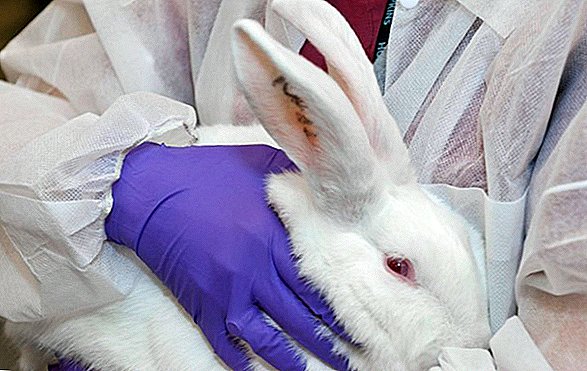 The main requirement for rabbits is full health. Since in nurseries, where they grow up rabbits for laboratories, intensive maintenance takes place, their life is rather short. Moreover, in such places quite often there are various diseases that will never occur in domesticated individuals.
The main requirement for rabbits is full health. Since in nurseries, where they grow up rabbits for laboratories, intensive maintenance takes place, their life is rather short. Moreover, in such places quite often there are various diseases that will never occur in domesticated individuals.
What breeds are most commonly used
Perennial clinical trials have identified breeds of rabbits that are most suitable for testing:
- New Zealand White;
- Chinchilla.
What diseases are tested
Most often, rabbits are used to test the following diseases:
- streptococcus;
- pseudotuberculosis;
- rheumatism;
- anthrax;
- salmonella;
- botulism;
- fever;
- experimental tumors.

The main methods of infection of animals
Infect a crawl in several ways. Consider them in more detail.
Intravenous method
For infection using the marginal vein of the ear. The place where the injection will be made is thoroughly disinfected, and then manipulations are performed to swell the veins by wiping with xylene. During the introduction of the drug should cause hyperemia, for this purpose, the tail is immersed in warm water.
Read more about what affects life expectancy and how much the rabbits live on average.
Infection through the gastrointestinal tract
Carried out in two ways:
- The animal is turned upside down, so that all entrails move to the diaphragm and the intestines, bladder and genitals are not damaged during the injection. The injection site is determined as follows: the abdomen is divided into three parts, the puncture site will be the lower part. The skin is disinfected, a fold is taken, a needle is inserted, then it is turned at a right angle and the abdominal wall is punctured with a quick push. This method allows you to immediately enter a sufficiently large amount of infectious material.
- Mix the microbial mixture with food, in this case it is quite difficult to take into account the dose. Much better results are obtained when the material is simply buried in the mouth. To do this, the animal is fixed, with the help of tweezers open the mouth and slowly, drop by drop, inject material, and the rabbit must swallow every drop.

Intracerebral infection
Such infection is carried out under general anesthesia, with the help of a thin bone puncture in the supraorbital sulcus. It is important to inject material slowly so as not to lead to an increase in intracranial pressure and loss of injected material.
Did you know? A rabbit weighing 2 kg can drink the same amount of water as a dog weighing 10 kg.
Conducting an experiment
Before the animal is infected, they prepare for the procedure and prepare the material. Consider how this is done.
Preparation for infection
Before the experiment, the animal:
- Branded. The imprint is placed on the ear, which is pre-treated with alcohol.
- Weigh. This can be done on any available scales by placing a rabbit on them.
- Determine the gender. The animal is held by the ears and withers, the tail is pulled and the area of the genital opening is felt: if there is a gap, then it is female, otherwise it is a male.
- Measure the temperature. To do this, the tip of the thermometer, smeared with petroleum jelly, is introduced into the rectum.

Animal infection material
Bacteria that are administered to an animal are grown in a suitable nutrient medium, observing all the conditions. The most common material is the patient's biological fluids - blood, plasma, sputum, discharge from the genital tract, as well as parts of infected tissues and organs.
Rabbit fixation
Such manipulations are carried out in order to introduce the biological material as quickly and efficiently as possible. The animal is placed on the left side, with one hand holding the withers, the other is placed on the stomach. Now the animal is pulled out at full length.
Important! It is recommended not to allow one employee to work with different types of animals in the nursery. If this cannot be done, then it is important to observe the following sequence in work: guinea pigs, mice, rats, and only then rabbits. This is due to the sensitivity of laboratory animals to possible infections.
Laboratory keeping and feeding of rabbits
In order to obtain the most correct experimental results, it is important to provide the animals with a full content and feeding. Consider what these requirements include. 
Peculiarities of keeping animals
Laboratory rabbits are kept in research institutions called vivaria. Buildings should be located on a hill, in a dry place, in the vicinity they arrange open-air cages, besides, a land plot should be located nearby. The whole territory should be enclosed with a blind fence.
Learn more interesting facts about rabbits.
Laboratory animals should be provided with:
- full feeding and care;
- maintaining optimal health;
- the ability to meet physiological needs;
- content in appropriate conditions;
- daily content control.
Rabbits can be placed individually or in groups, it all depends on the type of study. In the first case, use the boxed content system. With this content, each individual has a separate room for life, access to hay and other food, as well as drinking.
With group content, up to 6 individuals are contained in one cage, each animal has the same rights as with individual content. 
What departments does the vivarium consist of?
A properly constructed vivarium consists of the following departments:
- Quarantine. The newly arrived individuals are placed in it.
- Experimental. In it are krols who are directly involved in the experiments.
- Insulating. Infected animals are placed in it, which is too early to eliminate.
- Manipulation cabinet. Here they carry out a survey of animals before the start of the experiment, and also take blood and vaccinate.
Important! The room for laboratory rabbits should be isolated from other buildings of the research institution. In addition, there should be suitable living conditions, as animals love comfort very much.
The following premises are also available for work:
- biochemical and hematological laboratories;
- histology laboratory;
- premises for storage of pharmaceutical substances and preparations;
- staff room.

What is fed
For the purity of the experiment, it is important to feed the animal correctly, not only before infection, but also after. The diet should be as balanced as possible.
It must necessarily be present:
- corn;
- flax seeds;
- carrot;
- beet;
- potatoes;
- grass;
- sprouts oats.
We recommend reading about how to water the rabbits with water, whether it is possible to give the rabbits nettle, bread, cereals, bran, burdocks and wormwood, than you can not feed the rabbits, and also what grass to feed the rabbits.
To replenish the level of fluid in the body give water or pasteurized milk. Failure to comply with these standards will lead to a decrease in immunity, which will contribute to the development of undesirable diseases, as well as adversely affect the conduct of the experiment, distort its results. 
What to do with dead animals
After the animal has died, it is placed in the cold for a day. When the rabbit dies during the experiment, it is opened. After the carcass is burned.
Did you know? In order to minimize problems, the mouse gene was introduced into the embryos of the rabbit, and as a result the rabbits received resistance to hepatitis B. Such manipulations allow obtaining rabbits for laboratories with new properties.
As you can see, rabbits are animals that are used not only for meat or skins, as well as a pet, but also for laboratory research. No matter how sad it may sound, with their death they help people solve many health problems.






